Table of Contents
Introduction
Mole is one of the most iconic and complex sauces in the world, especially within Mexican cuisine. It's a rich, deeply flavorful sauce that can be used in everything from enchiladas to tacos, and even as a dip. If you're curious about what is in mole, you've come to the right place. In this article, we'll take you on a flavor-packed journey through the ingredients that make mole so special—and how you can use it in your own kitchen.
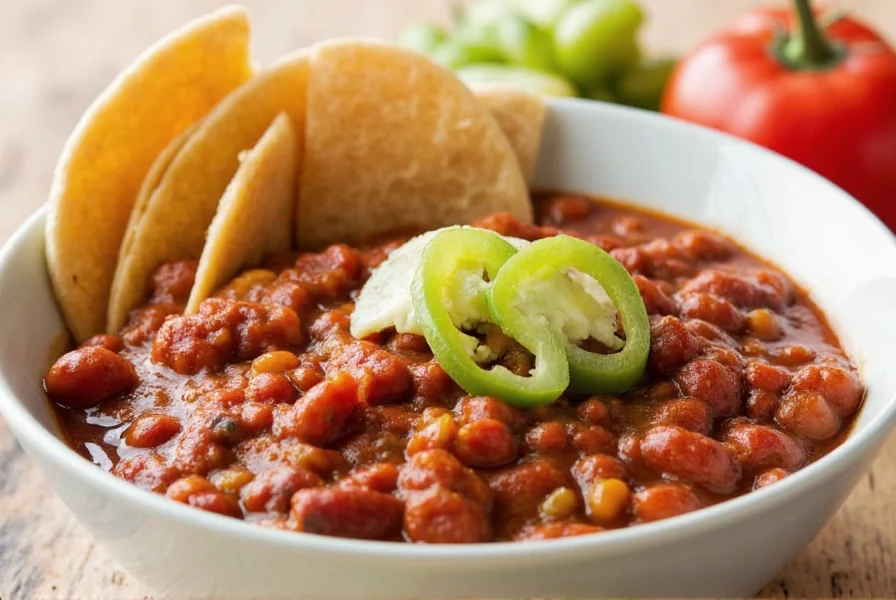
What Is Mole?
Mole is a traditional Mexican sauce made from a blend of dried chilies, spices, nuts, seeds, and sometimes chocolate or fruit. The word "mole" comes from the Nahuatl language, meaning "mix" or "blend," which perfectly describes the nature of this sauce. There are many types of mole, each with its own unique set of ingredients and flavor profile, but they all share one thing in common: they're packed with flavor.
Mole is considered one of Mexico's national dishes and varies significantly by region. It's not just a sauce but a cultural symbol that represents Mexico's rich culinary heritage. Whether you're making it from scratch or choosing a store-bought version, mole is a versatile and delicious addition to any kitchen.
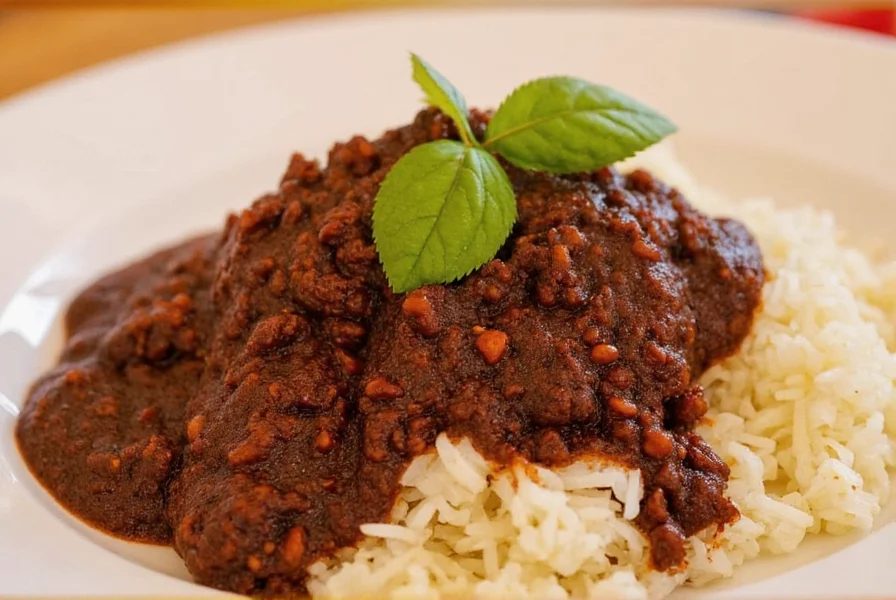
Common Ingredients in Mole
Here are some of the most common ingredients you'll find in a traditional mole recipe:
- Dried Chilies: These form the base of most mole recipes. Common varieties include ancho, pasilla, and mulato chilies.
- Nuts and Seeds: Usually almonds or peanuts, along with sesame seeds, add texture and richness.
- Spices: Cinnamon, cloves, cumin, and garlic are frequently used to build depth and warmth.
- Chocolate: Dark chocolate is often added to balance the heat and add a hint of sweetness.
- Fruit: Some moles include raisins, prunes, or even mango to add natural sweetness and complexity.
- Tomatoes: Used in some regional variations to add acidity and body.
These ingredients are typically ground together into a paste, then simmered with broth or water to create the final sauce. The result is a thick, velvety sauce that's bursting with flavor.
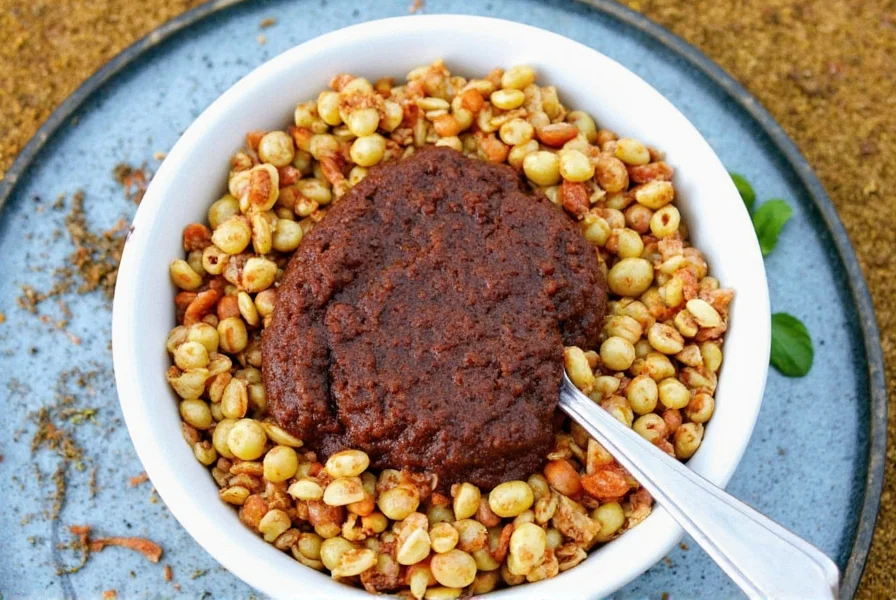
Different Types of Mole
There are several types of mole, each with its own unique twist. Here's a quick look at some of the most popular ones:
| Type of Mole | Key Ingredients | Flavor Profile |
|---|---|---|
| Mole Poblano | Ancho chilies, chocolate, nuts, tomatoes | Sweet, smoky, slightly spicy |
| Mole Verde | Green chilies, tomatillos, herbs | Herby, tangy, less spicy |
| Mole Rojo | Red chilies, tomatoes, cinnamon | Spicy, acidic, warm |
| Mole Negro | Smoked chilies, chocolate, nuts | Deep, smoky, rich |
Each type of mole has its own story and cultural significance. For example, what is in mole might vary drastically between a traditional Mole Poblano and a more modern Mole Verde. Understanding these differences can help you choose the right one for your dish.
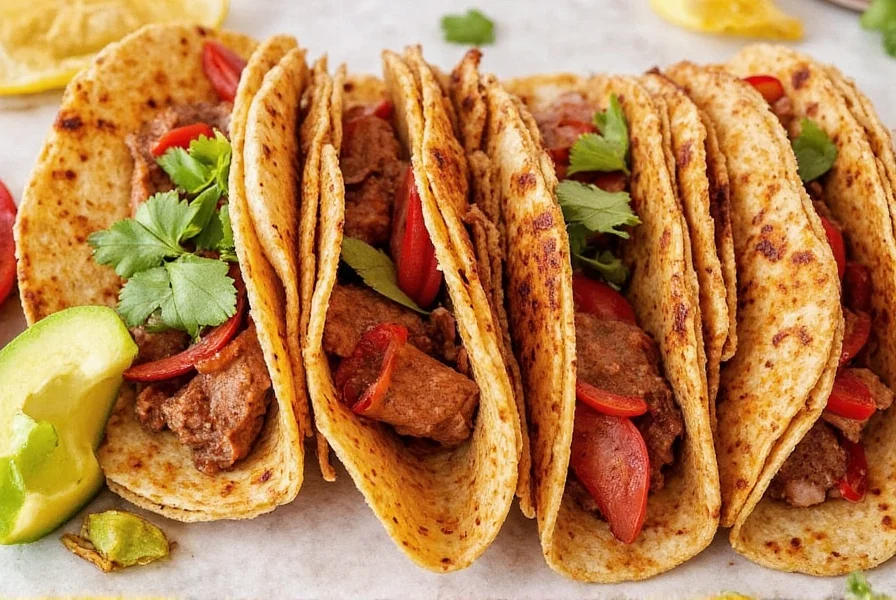
Practical Tips for Cooking with Mole
If you're new to using mole, here are a few practical tips to help you get started:
- Use it in moderation: Mole is very concentrated, so a little goes a long way. Start with 1–2 tablespoons per serving and adjust to taste.
- Pair it with protein: Mole pairs beautifully with chicken, pork, or even tofu. It adds a layer of richness that complements grilled or roasted meats.
- Make it yourself: While store-bought mole is convenient, making your own allows you to control the flavor and ingredients. Plus, it's a fun cooking challenge!
- Experiment with substitutions: Don't be afraid to swap out certain ingredients based on what you have on hand. Just keep the core flavors in mind.
- Store it properly: Once made, mole can be stored in an airtight container in the fridge for up to a week, or frozen for longer storage.
Remember, what is in mole isn't just about the ingredients—it's also about the love and care that go into each batch. Whether you're making it for a family dinner or a special occasion, the effort will be well worth it.
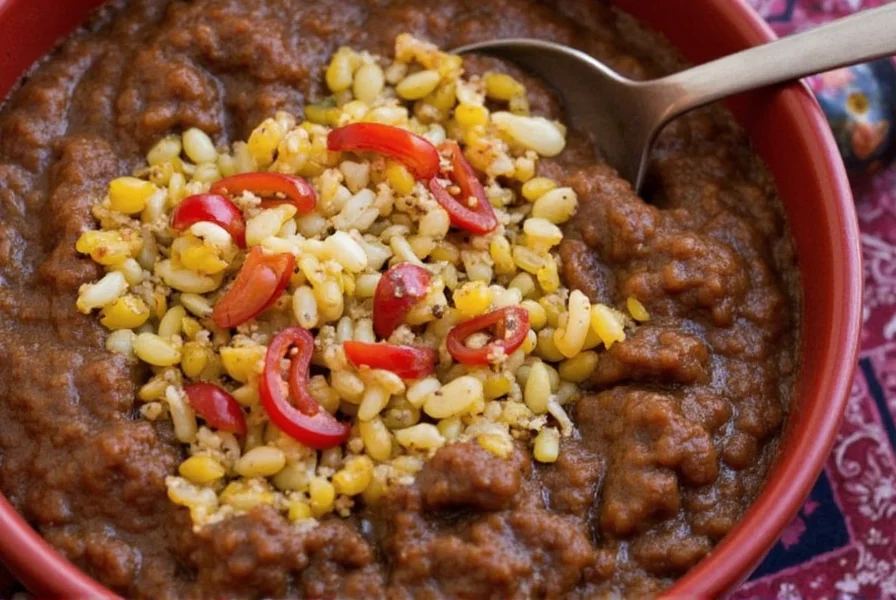
Buying Guide: Choosing the Best Mole
If you're not ready to make your own mole, there are plenty of store-bought options available. Here's a quick buying guide to help you choose the best one for your needs:
Top 5 Mole Products
- Mole de Olla
- Features: Traditional recipe, made with a mix of chilies, nuts, and spices.
- Advantages: Rich flavor, great for soups and stews.
- Use Cases: Ideal for authentic Mexican dishes like tamales and enchiladas.
- Target Audience: Home cooks looking for convenience without sacrificing flavor.
- Suitable Occasions: Weeknight dinners, holiday meals, or casual gatherings.
- La Michoacana Mole
- Features: Smooth texture, balanced spice and sweetness.
- Advantages: Versatile and easy to use.
- Use Cases: Perfect for dipping, marinating, or adding to rice.
- Target Audience: Beginners who want to experiment with mole.
- Suitable Occasions: Casual meals, potlucks, or as a gift.
- San Miguel Mole
- Features: Thick and creamy, with a deep, smoky flavor.
- Advantages: Great for those who enjoy bold, intense flavors.
- Use Cases: Ideal for slow-cooked dishes or as a base for sauces.
- Target Audience: Experienced cooks who want to elevate their dishes.
- Suitable Occasions: Special events, family dinners, or gourmet cooking.
- El Mexicano Mole
- Features: Mildly spiced, with a smooth consistency.
- Advantages: Easy to work with and suitable for all palates.
- Use Cases: Great for beginners or those who prefer milder flavors.
- Target Audience: Families or those new to Mexican cuisine.
- Suitable Occasions: Everyday meals, picnics, or informal gatherings.
- Alimentos del Sol Mole
- Features: Made with organic ingredients, no artificial additives.
- Advantages: Health-conscious option with clean labeling.
- Use Cases: Ideal for those who prioritize natural and wholesome foods.
- Target Audience: Health-focused individuals or eco-conscious consumers.
- Suitable Occasions: Gourmet meals, health-focused events, or as a premium gift.
When choosing a mole product, consider your personal preferences, the type of dish you're making, and the desired level of flavor intensity. Remember, what is in mole can vary significantly between brands, so it's worth trying a few different options to find your favorite.
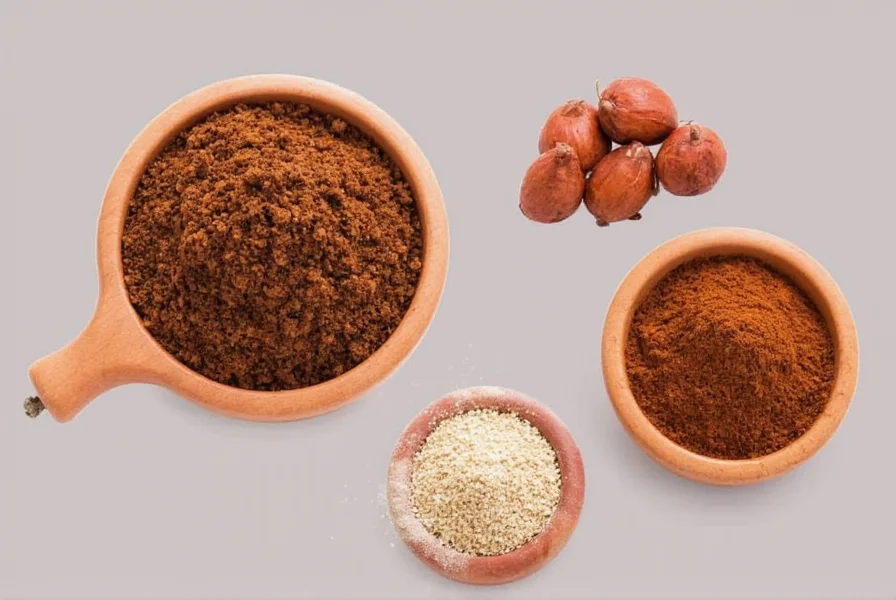
Frequently Asked Questions
Does mole contain chocolate?
Not all mole recipes contain chocolate, but many traditional varieties like Mole Poblano and Mole Negro do include a small amount of unsweetened chocolate or cocoa. The chocolate isn't meant to make the sauce sweet but rather to add depth, richness, and to balance the heat from the chilies.
Is mole spicy?
Mole has varying levels of spiciness depending on the type and recipe. Some moles like Mole Poblano are mildly spicy with a balance of sweet and savory flavors, while others like Mole Rojo can be quite spicy. The chocolate and other ingredients help balance the heat, making most traditional moles more complex than purely hot.
What does mole taste like?
Mole has a complex, multi-layered flavor profile that's simultaneously sweet, savory, spicy, and earthy. Depending on the variety, you might taste notes of smoky chilies, warm spices like cinnamon and cloves, nuttiness from seeds and nuts, and a subtle richness from chocolate. The best mole sauces balance all these elements into a harmonious whole.
Is mole Mexican?
Yes, mole is a traditional Mexican sauce with indigenous roots that was later influenced by Spanish ingredients. It's considered one of Mexico's national dishes and varies significantly by region. The word "mole" comes from the Nahuatl word "molli," meaning "sauce" or "concoction."
How is mole pronounced?
Mole is pronounced "moh-lay" (IPA: /ˈmoʊ.leɪ/). Many English speakers mistakenly pronounce it as "mole" like the animal or the unit in chemistry, but the correct pronunciation has two syllables with emphasis on the first.
Can mole be vegan?
Traditional mole can be vegan as its core ingredients are plant-based (chilies, spices, nuts, seeds, and sometimes chocolate). However, some recipes or commercial products might include chicken broth or lard. When making mole at home, it's easy to keep it vegan by using vegetable broth instead of animal-based broths.
How long does mole last?
Homemade mole can be stored in an airtight container in the refrigerator for up to one week. For longer storage, it can be frozen for 4-6 months. Store-bought mole typically has a longer shelf life - check the expiration date on the package. Always look for signs of spoilage like off smells or mold before using.
What's the difference between mole and guacamole?
Despite the similar names, mole and guacamole are completely different sauces. Mole is a complex sauce made from chilies, spices, nuts, seeds, and sometimes chocolate. Guacamole is a simpler sauce/dip made primarily from mashed avocados, lime, onions, and cilantro. The only connection is that both names derive from Nahuatl words for "sauce" or "concoction."
Conclusion
In summary, what is in mole is a question that leads to a fascinating exploration of flavor, culture, and tradition. From the smoky depth of dried chilies to the sweetness of chocolate and the warmth of spices, mole is a sauce that tells a story through every bite. Whether you're making it from scratch or choosing a store-bought version, mole is a versatile and delicious addition to any kitchen.
So next time you're wondering what is in mole, remember that it's more than just a list of ingredients—it's a celebration of food, history, and passion. With the right tools and a bit of creativity, you can bring the magic of mole into your own home. Happy cooking!
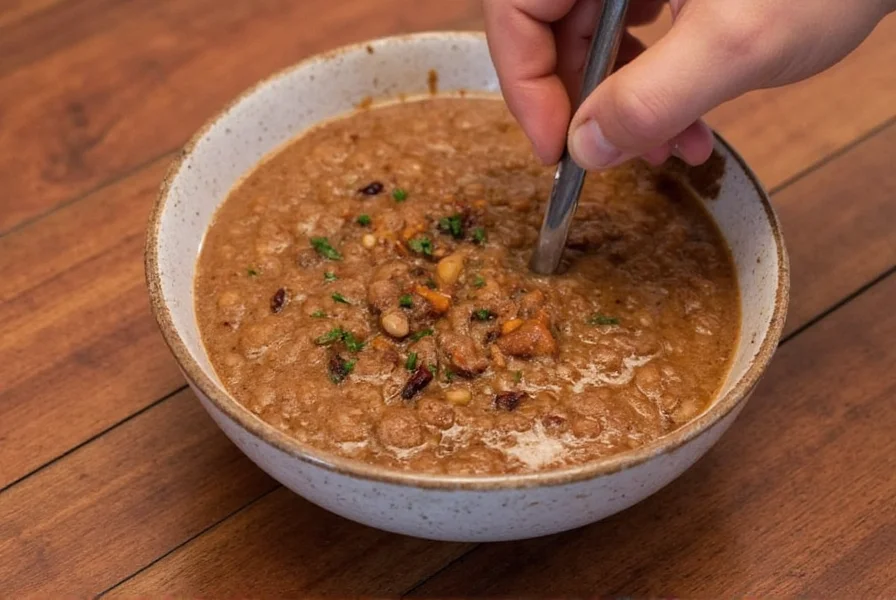

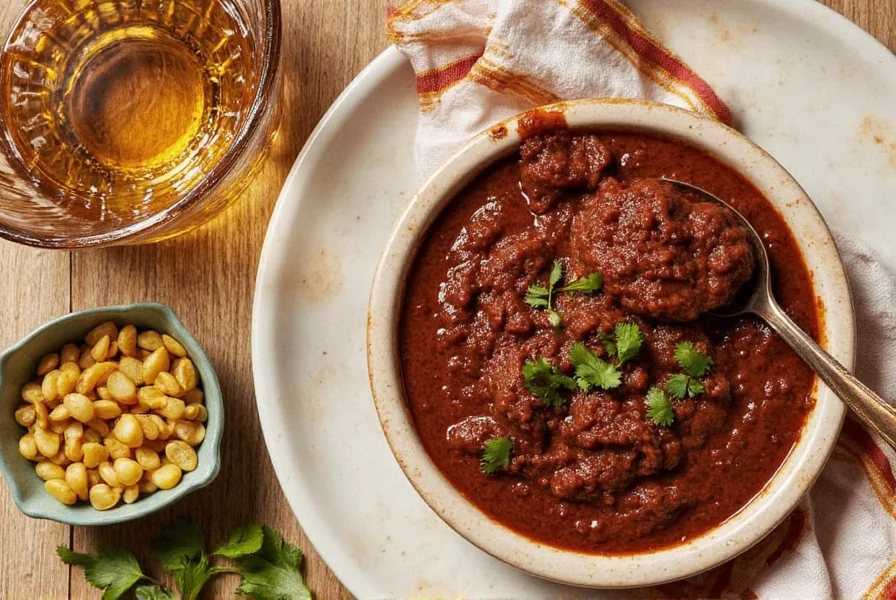









 浙公网安备
33010002000092号
浙公网安备
33010002000092号 浙B2-20120091-4
浙B2-20120091-4